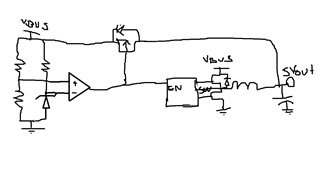Hi, we make a buck controller topology in which USB PD input. This means input voltages are 5V, 9V, 15V, and 20V. The maximum current is 5A. We want, if the input voltage is 5V, İnput voltage will directly pass to the output. In other scenarios, the controller going to regulate the input voltages. We editing a topology that contains a comparator and a PMOS load switch for this. If the input is 5V, PMOS is closed and the controller is disabled through the EN pin. If varied than 5V, just the opposite. The issue here is, can the SW node operate at 5V reverse voltage when the controller is disabled? Occur damage of this? (Notice the high side MOSFET's body diode is reverse bias with least -4V)
Thank you,
Best Regards


